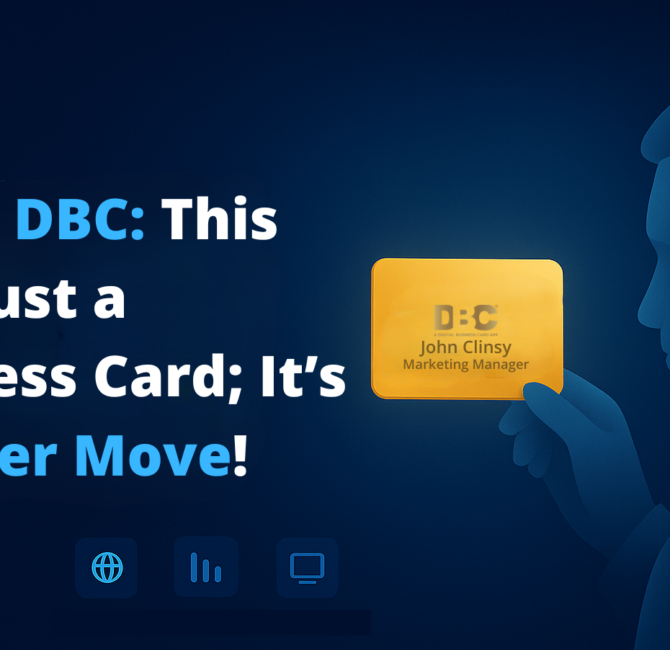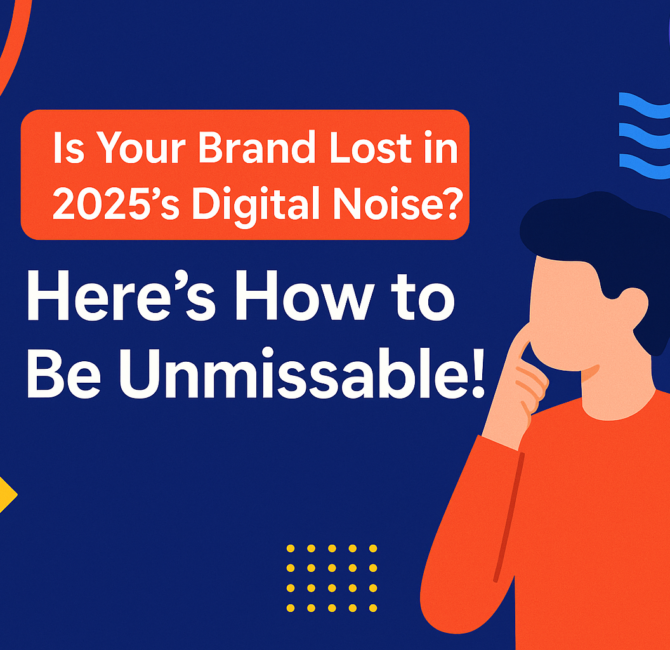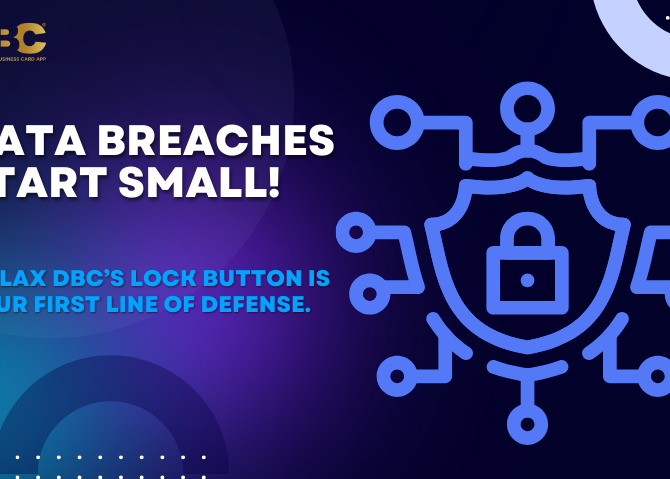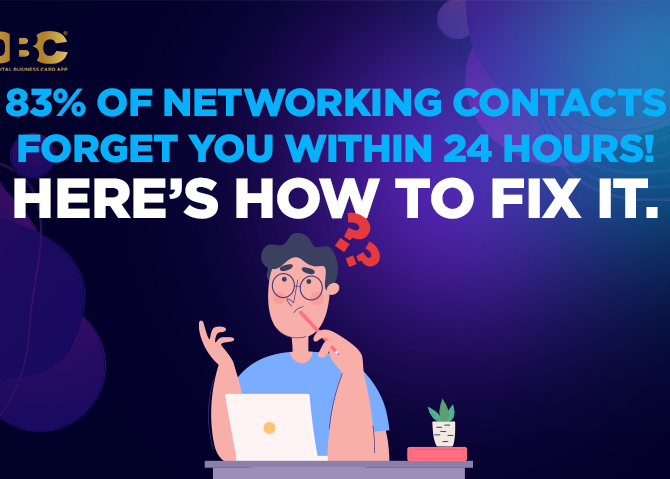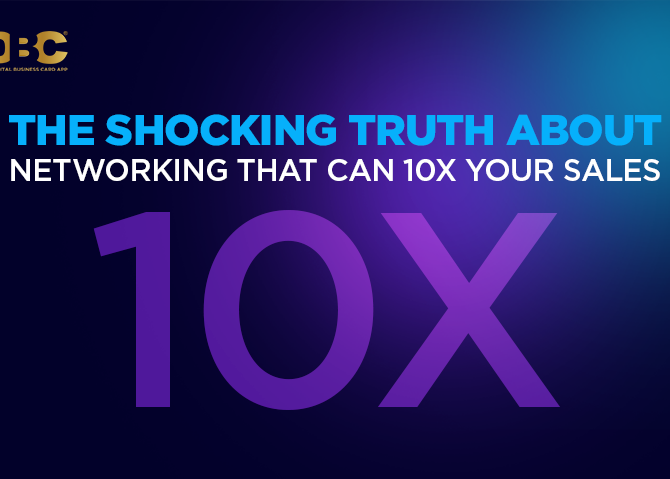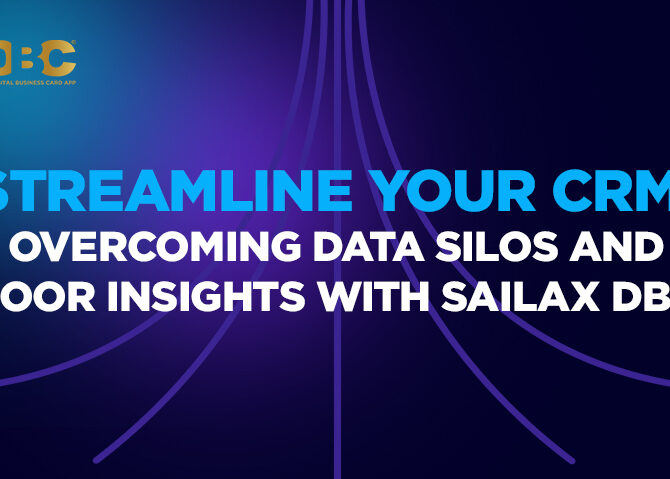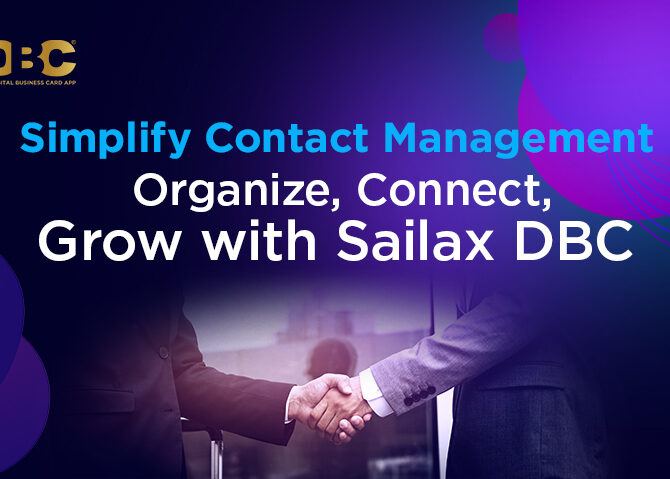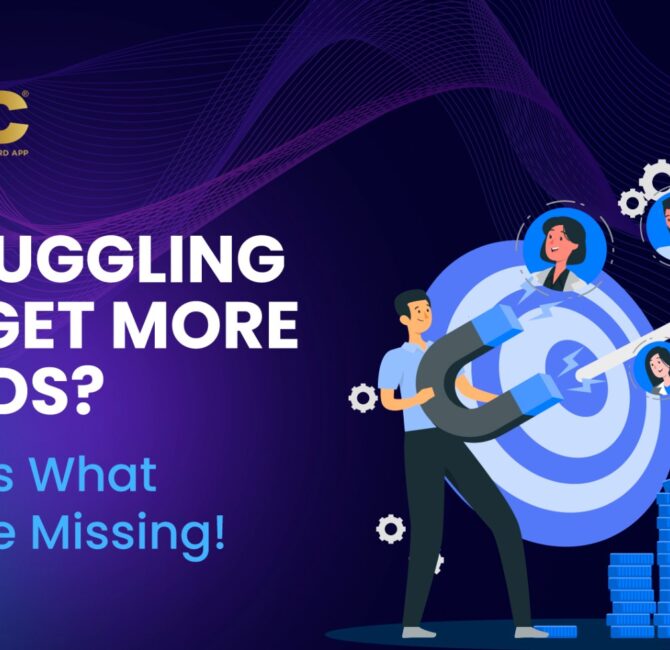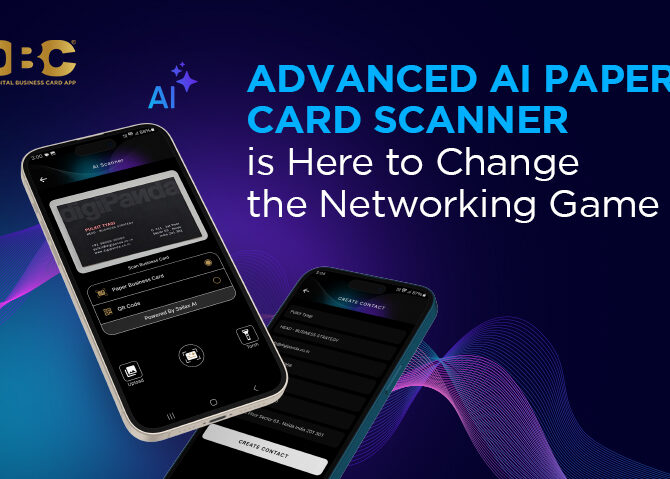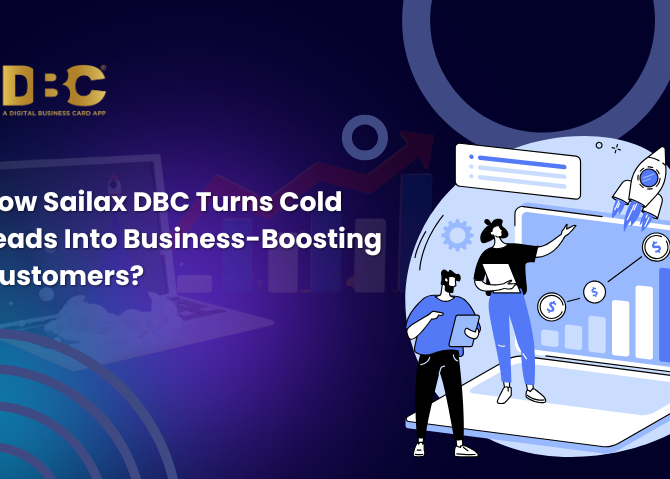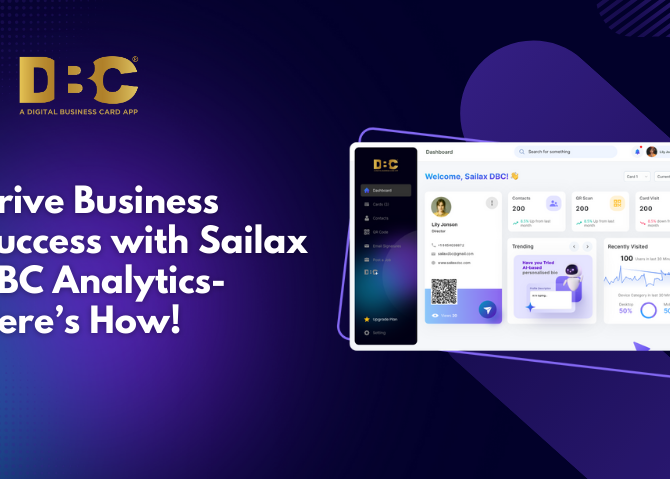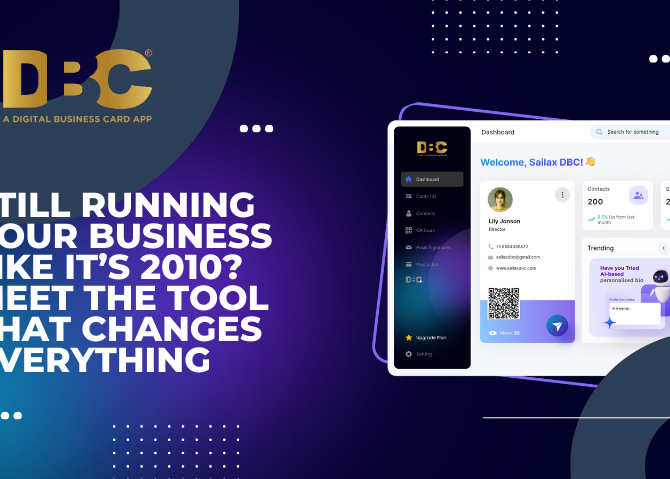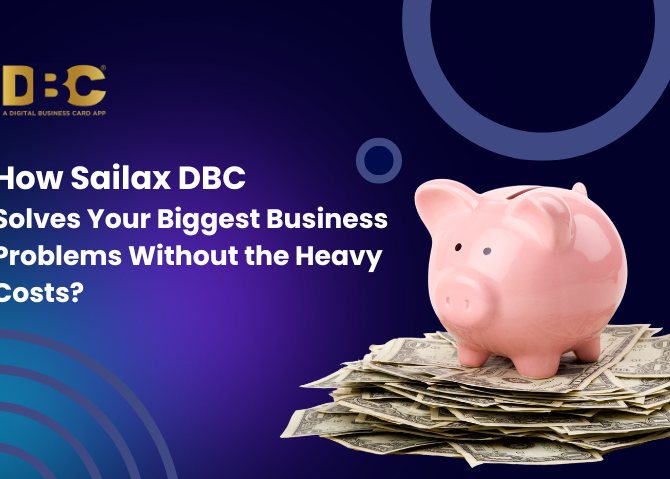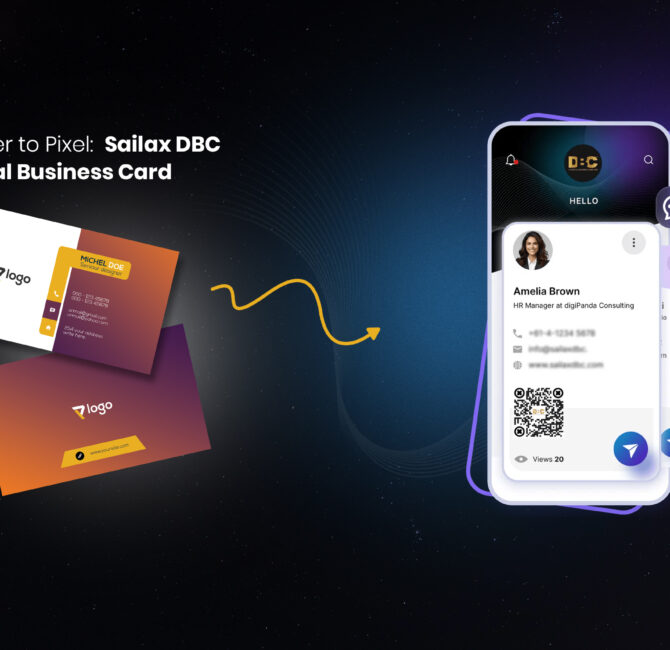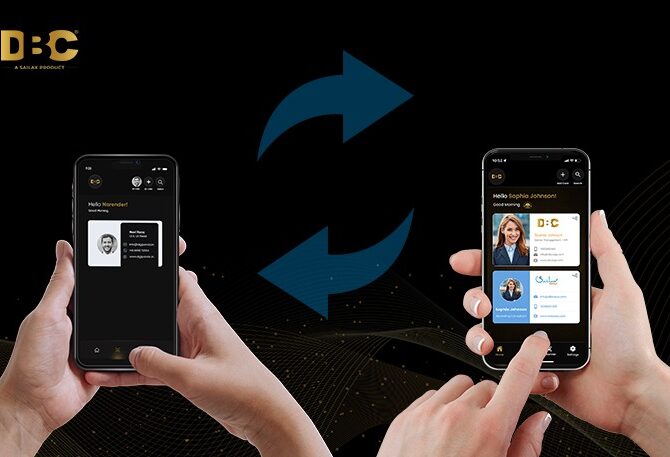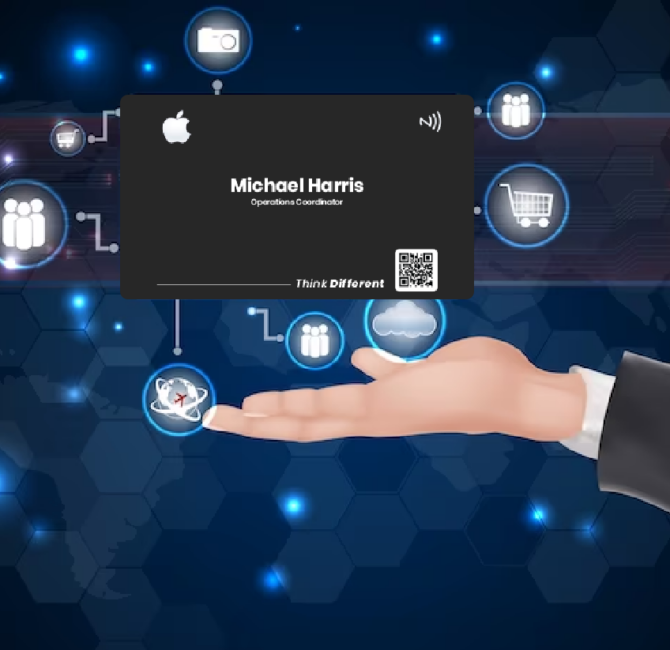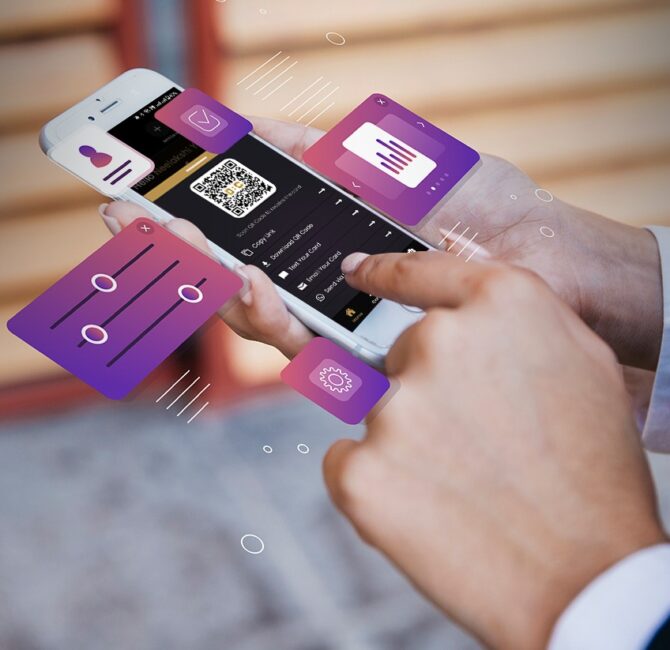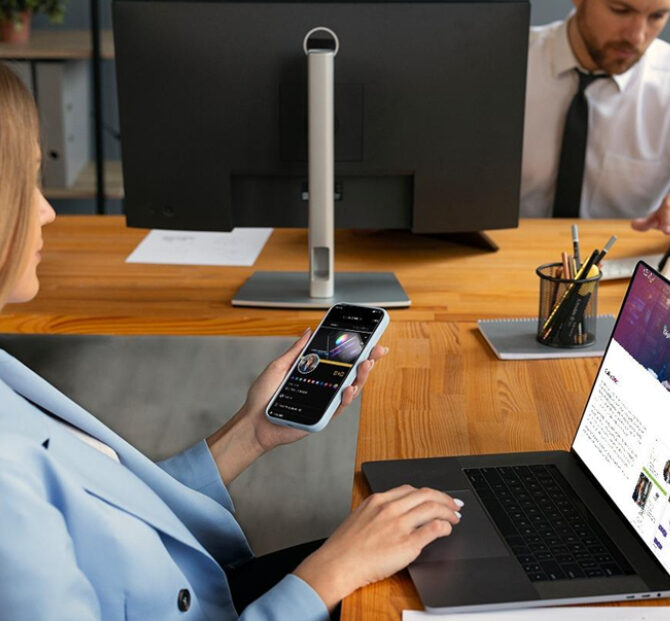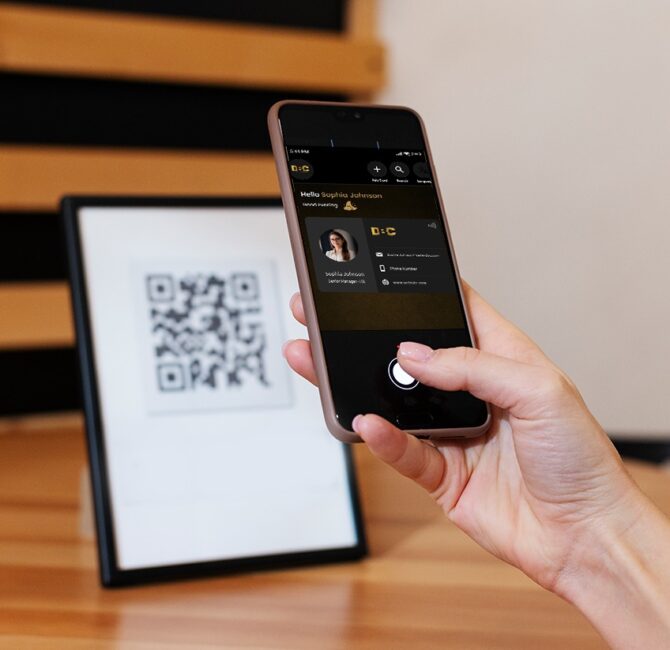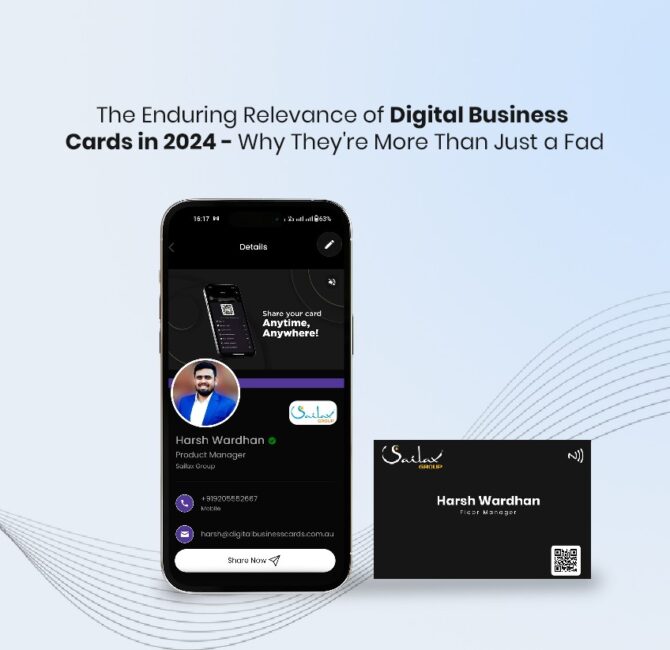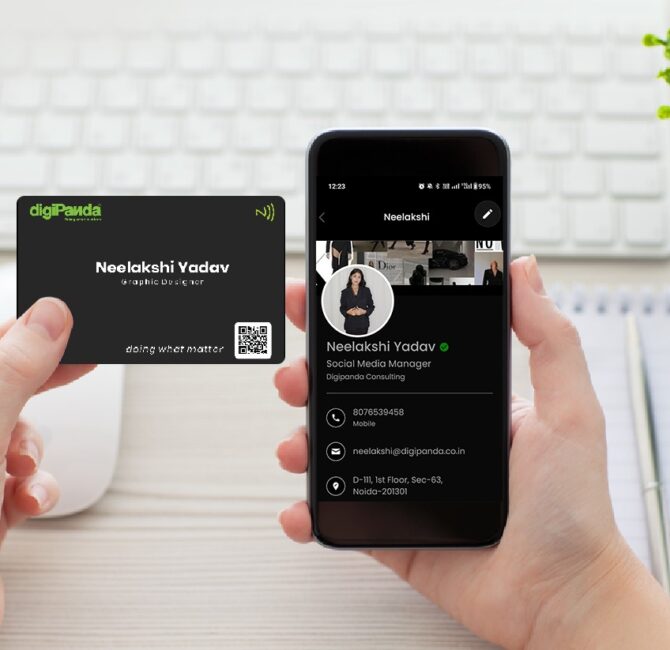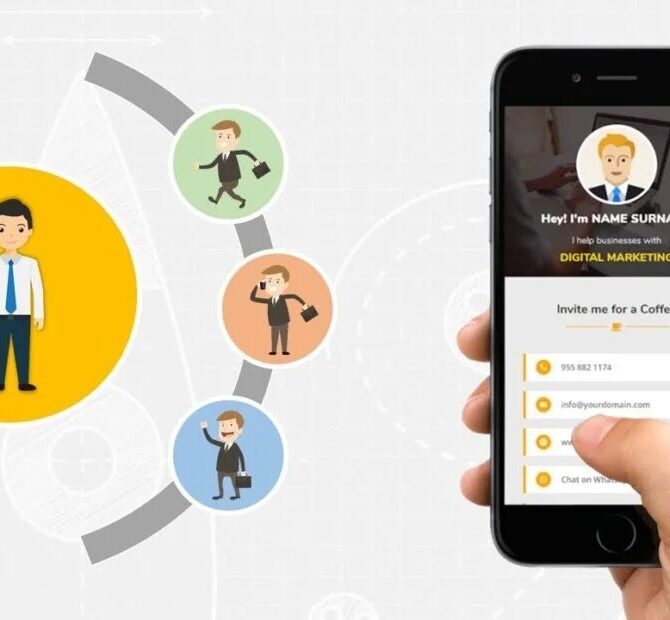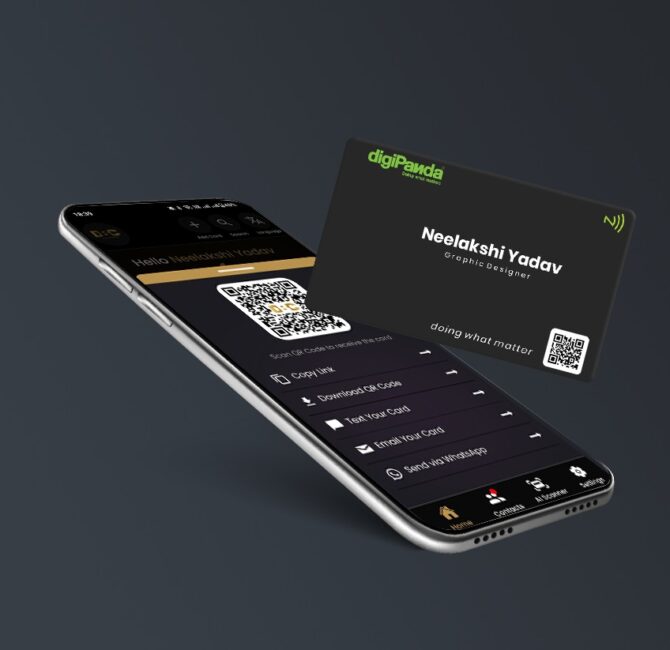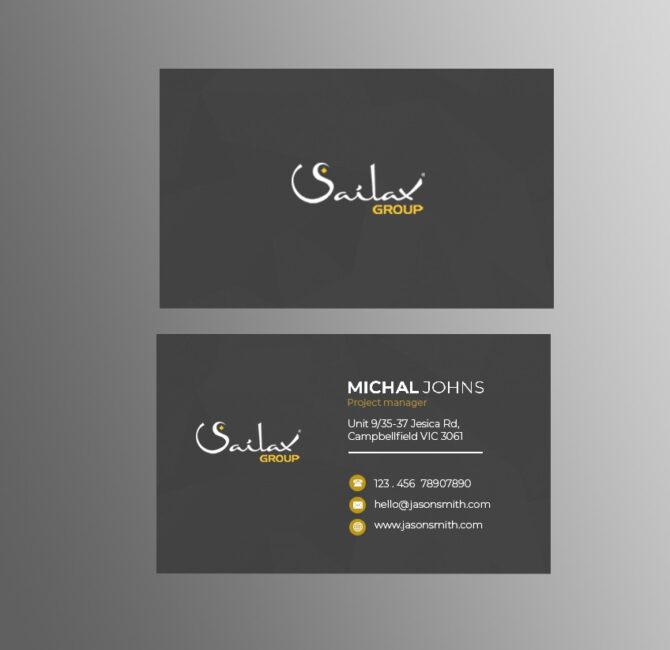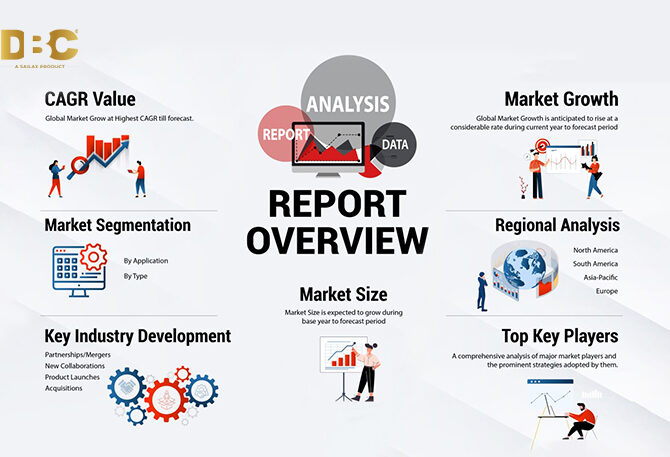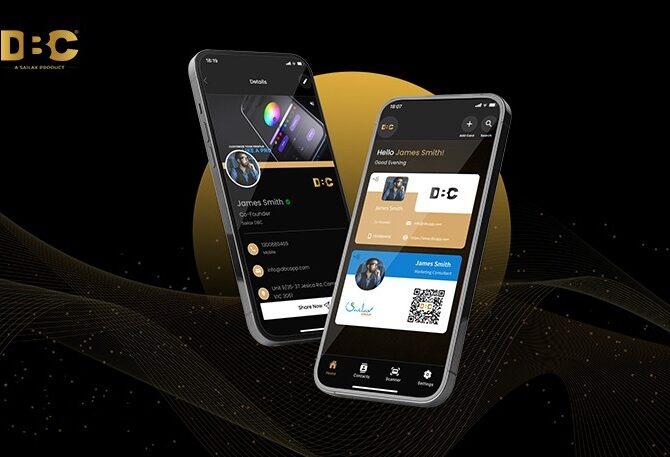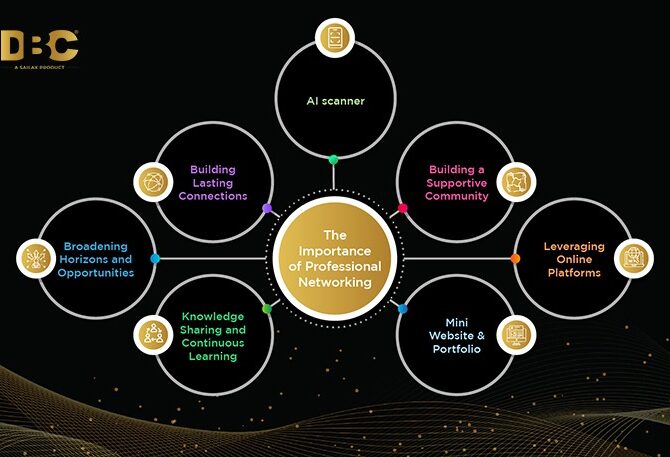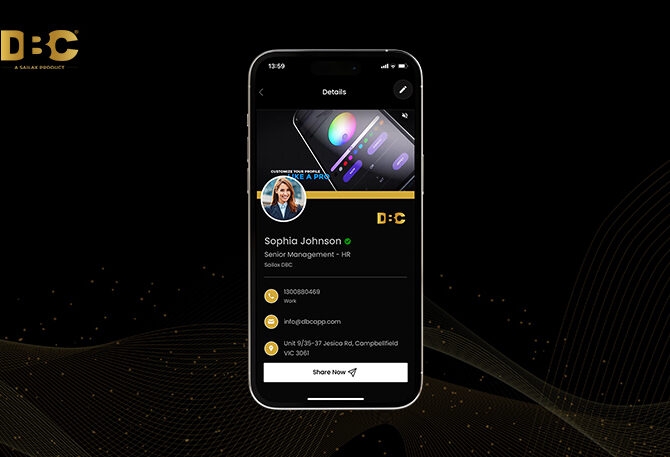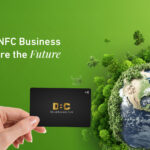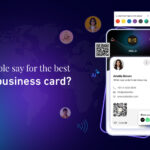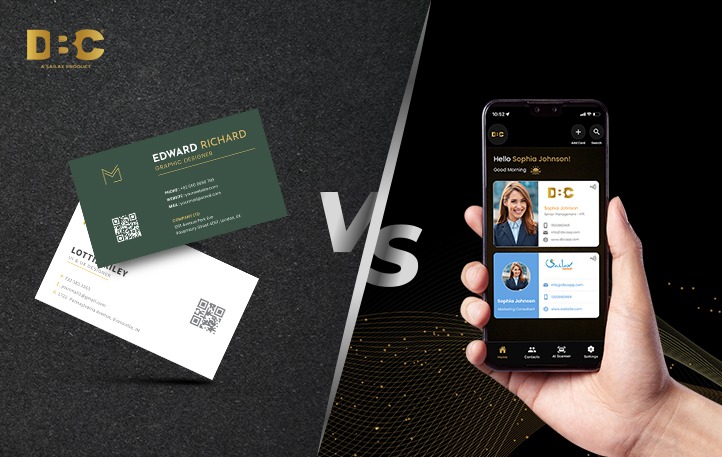
The Pros & Cons of Paper Vs Virtual Visiting Cards
In the realm of networking and exchanging contact details, the ongoing debate between physical and digital business cards has intensified. Paper/ physical business cards carry a traditional charm with their tactile quality, whereas digital/ virtual business cards boast convenience and effortless sharing. Deciding between the two hinges on grasping the distinct advantages and limitations each format brings.
In this exploration, we delve into the disparities between paper and digital business cards. The aim is to guide you through this decision-making process, assisting you in choosing the option that perfectly aligns with your networking objectives and personal inclinations.
Understanding Paper Business Cards
A paper business card is a tangible card usually sized 85 mm x 55 mm, imprinted with crucial contact details such as email address, phone number, company website, and social media handles. These cards are frequently shared in networking events or business engagements, offering a straightforward and compact means for others to acquire your contact information. Crafted to display your company’s branding, paper business cards function as a visual representation of your business, striving to leave a favourable impression on behalf of your company.
Pros of Paper Business Cards
Tangible and Memorable:
The physical nature of a paper business card offers a tangible experience, fostering a lasting impression and personal connection during exchanges. A well-crafted, high-quality card can be visually appealing and memorable, setting you apart in the digital landscape.
Tradition and Professionalism:
Paper business cards carry a sense of tradition and professionalism deeply embedded in professional settings. They signify a commitment to your professional identity and demonstrate a traditional and credible presentation.
Versatility and Flexibility:
Paper cards provide design flexibility, allowing for various customization options. Different shapes, sizes, paper types, textures, and finishes enable the creation of a unique representation of your brand. This versatility aligns the card design with your industry, style, and personal preferences.
Accessibility:
In contrast to digital alternatives dependent on technology, paper business cards are universally accessible. They require no special device or application, offering convenience for individuals who may not be tech-savvy or have limited access to digital platforms.
Cons of Paper Business Cards
Limited Information and Space
The physical limitations of a small card restrict the inclusion of comprehensive details. Incorporating extensive information such as a list of services, multiple contact methods, or multimedia elements like videos or interactive links can be challenging.
Requires a Scanner
Transferring information from a paper business card to a digital format usually demands access to a scanner. This additional step may not always be convenient or readily available.
Need for Design Expertise
Creating an attractive and impactful paper business card often necessitates the expertise of a graphic designer or professional printing service. This adds an extra cost and may require time to find the right design specialist.
Short Lifespan
While paper business cards are exchanged with good intentions, they frequently end up discarded or forgotten within a short period. This diminishes the long-term value and impact of the card.
Frequent Redesigning and Printing
Changes in contact information or branding elements may necessitate frequent redesigning and reprinting of paper business cards. This process can be time-consuming and result in additional expenses.
Consumes a Lot of Space
Accumulating numerous paper business cards can occupy significant physical space, especially if you attend multiple networking events or receive a large number of cards. Arranging and storing them can become challenging as time progresses.
Understanding Virtual Business Cards
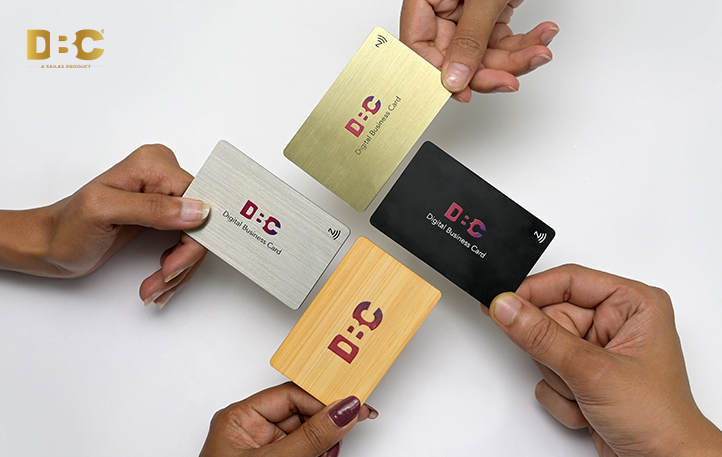
A virtual business card serves as an electronic portrayal of your professional details and contact information. Rather than existing in physical form, it takes the shape of a digital file or an online profile that can be effortlessly shared and accessed through various digital platforms. This modern approach to sharing contact information provides a convenient and eco-friendly alternative to traditional paper business cards. With virtual visiting cards, the emphasis is on seamless sharing and easy accessibility, making networking more efficient in our digital age.
Pros of Virtual/ Digital Business Cards
Cost-effective and Eco-friendly
Virtual visiting cards eliminate printing costs, making them a cost-effective and environmentally friendly option. They contribute to sustainability efforts by minimizing paper waste.
Multimedia Capabilities
Incorporating multimedia elements like images, videos, and interactive links is a standout feature of digital business cards. This allows for a dynamic and engaging presentation, leaving a lasting impression.
Convenient Information Storage
Easily store and organise digital business cards in various digital formats, such as contact apps, email clients, or cloud storage platforms. This ensures quick accessibility and reduces the risk of misplacing physical cards.
Easy Updating
Updating contact information is hassle-free with DBC cards. Simply edit the digital file or update your online profile, ensuring that recipients always have access to your latest details without the need for card reprints.
Great for Contact Management
Seamless integration with contact management systems facilitates efficient organization and synchronization with other digital platforms. This streamlines networking efforts and enhances relationship management.
Easy Customization
Enjoy flexibility in customization with digital business cards. Easily modify design, layout, and content to align with branding or personal preferences, allowing for a unique and personalized professional identity.
Easy Sharing and Accessibility
Digital business cards offer effortless sharing and immediate accessibility. This ensures that your contact details and additional resources are readily available to others, promoting swift and hassle-free networking.
Enhanced Analytics and Tracking
Gain insights into recipient engagement with digital business cards. Track metrics like views, link clicks, and follow-up actions, providing valuable data to measure the effectiveness of your networking efforts.
Cons of Virtual/ Digital Business Cards
Technology Dependence
Virtual business cards rely on technology and internet access. The challenge arises when recipients lack a compatible device or internet connection, hindering access to the card, especially in certain situations or when targeting specific demographics.
Lack of Personal Touch
Physical business cards offer a tangible experience and facilitate face-to-face interactions, creating a personal connection. In contrast, digital cards, while efficient, may lack the same level of personal touch, making it challenging to leave a lasting impression.
Compatibility Issues
Varying compatibility with different devices, operating systems, or email clients can lead to inconsistencies in how digital business cards are displayed or accessed. This potential inconsistency may impact the overall user experience.
Digital business cards present a modern and technologically advanced approach to networking. They bring cost-effectiveness, eco-friendliness, and opportunities for multimedia engagement to the forefront. While lacking the tactile experience of traditional paper cards, virtual business cards excel in accessibility, tracking capabilities, and the ability to leave a digital footprint.
Conclusion
In the ongoing debate between paper and virtual business cards, each option comes with its set of advantages and drawbacks. The decision hinges on factors such as cost, flexibility, tracking capabilities, environmental impact, personalization, security, handling, durability, and the importance of first impressions.
Physical business cards embody tradition and professionalism, but they can be expensive, demand frequent updates, and contribute to paper waste. Conversely, digital business cards offer convenience, easy sharing, instant updates, cost-effectiveness, and environmental friendliness.
The optimal decision is contingent on your specific needs, target audience, adherence to industry standards, and personal preferences. Striking a balance by strategically using both formats might be a prudent approach. Ultimately, whether it’s a physical card or a digital alternative, the key is to select a business card that assists you in forging memorable and impactful connections with your audience like DBC.






